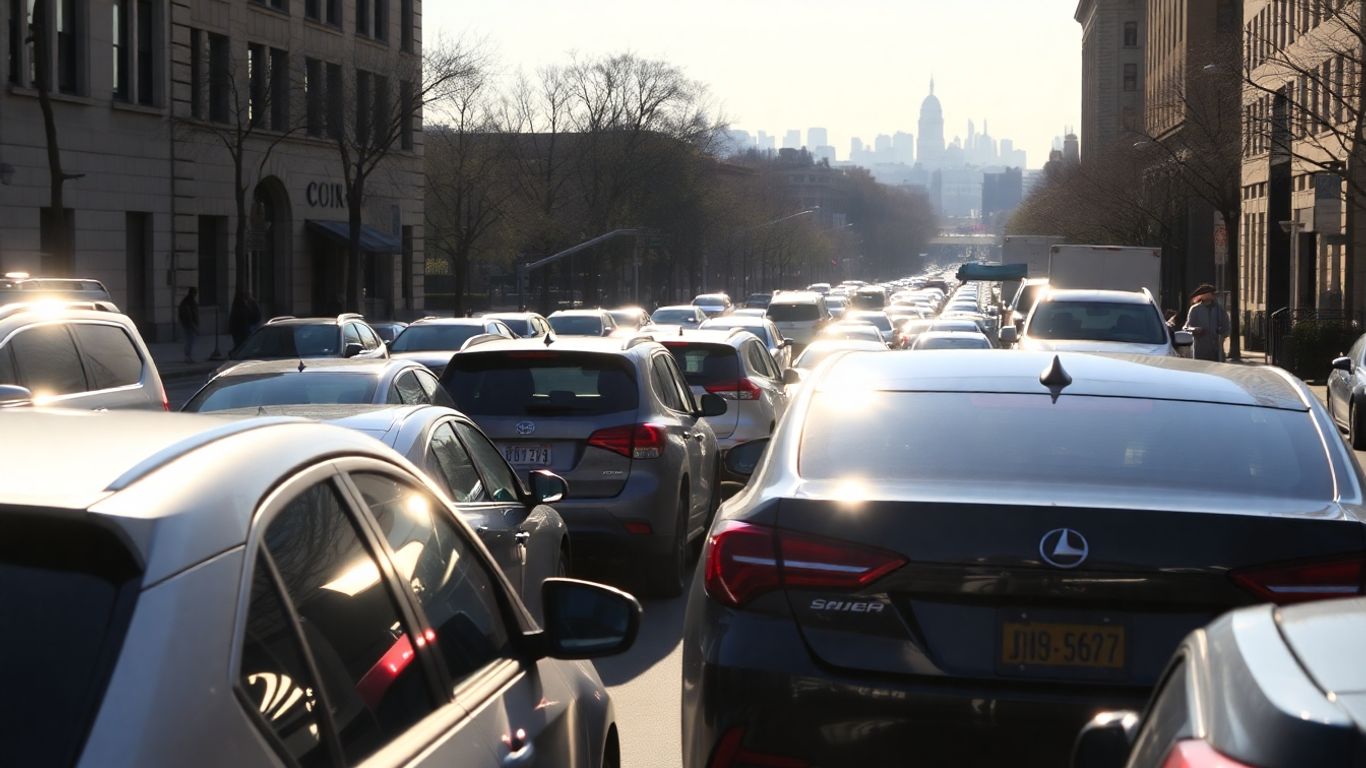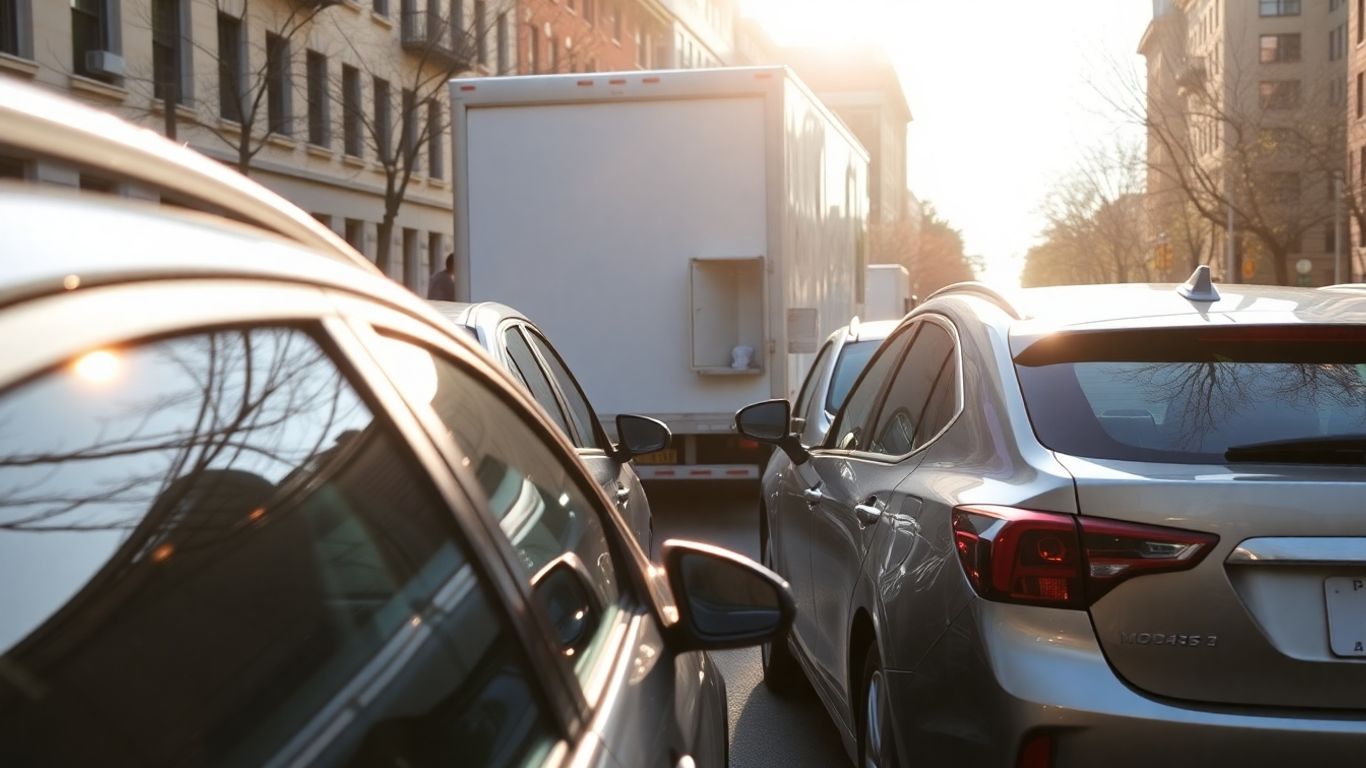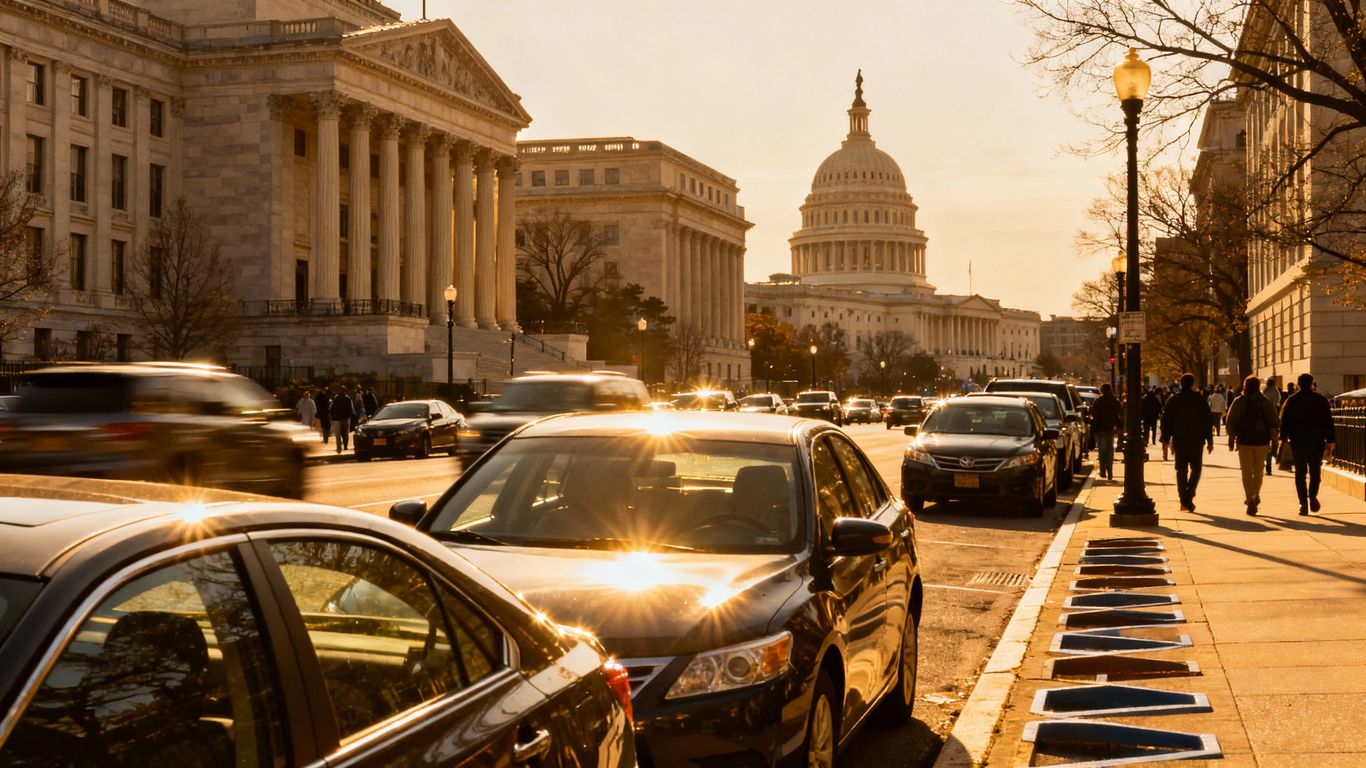Navigating D.C. Streets: Your Essential Guide to Efficiently Moving with Only Street Parking
Moving to D.C. can feel like a puzzle, especially when you're dealing with street parking only. It's not like you can just pull a big truck right up to your door in every neighborhood. This guide is here to help you figure out how to move efficiently in areas with street parking only — a D.C. survival guide. We'll break down what you need to know to make your move go as smoothly as possible, from understanding the rules to picking the right time.
Key Takeaways
- Figure out D.C.'s parking rules and get any needed temporary permits way before moving day.
- Pick the right time to move, avoiding busy traffic hours and days if you can.
- Choose your moving vehicle wisely and plan routes carefully, especially for bigger trucks.
- Local movers know the city's tricks and can help a lot with parking and tricky streets.
- Get ready beforehand by making a plan, clearing out stuff, and packing smart to make loading easier.
Mastering D.C. Street Parking for Your Move
Moving in D.C. with only street parking can feel like a puzzle, but with the right approach, it's totally doable. The city has its own set of rules, and knowing them is half the battle. Understanding these regulations upfront will save you a lot of headaches on moving day.
Understanding D.C. Parking Regulations
Washington D.C. has some pretty specific parking rules, especially when it comes to larger vehicles like moving trucks. You'll want to get familiar with things like residential permit parking zones, street sweeping schedules, and any temporary restrictions that might pop up. Ignoring these can lead to tickets or, even worse, your truck getting towed. It's worth spending some time on the D.C. Department of Transportation (DDOT) website to get the lowdown on what's allowed and what's not in the areas you'll be moving to and from.
- Residential Permit Parking (RPP): Many D.C. neighborhoods have RPP zones. This means you might need a temporary permit for your moving truck, even if you live there. Check the signs carefully.
- Street Sweeping: Keep an eye out for street sweeping signs. Parking in a spot on a street sweeping day will likely get you a ticket.
- Temporary No Parking Signs: For moving day, you can often request temporary "No Parking" signs from DDOT. This is a great way to reserve a spot right in front of your building, but it needs to be done well in advance.
The key is to be proactive. Don't wait until the last minute to figure out parking. A little research goes a long way in making your move smoother.
Securing Temporary Parking Permits
This is a big one. If you need to park a large moving truck on a residential street for an extended period, you'll likely need a temporary parking permit. The process usually involves applying through DDOT, and there's often a fee involved. You'll need to specify the dates and times you need the permit for, and where exactly you plan to park. It's not a quick process, so plan to apply at least a couple of weeks before your move. They might even require you to post the signs yourself once approved.
Navigating Neighborhood-Specific Rules
Every neighborhood in D.C. can have its own quirks. Some areas might have stricter enforcement of parking rules, while others might have more available street parking. For instance, areas with lots of row houses might have narrower streets, making it tougher for bigger trucks. It's a good idea to drive around your new neighborhood before moving day, just to get a feel for the parking situation. Talk to neighbors if you can; they often have the best insights into what works and what doesn't when it comes to parking for a move.
Strategic Timing for Efficient Relocation

When you're moving in D.C. and relying on street parking, timing is everything. It's not just about picking a day; it's about picking the right time of day and week to make things easier.
Avoiding Peak Traffic Hours
Washington D.C. is known for its busy roads, and traffic can really slow down your move, especially if you're trying to maneuver a larger truck. The less traffic you encounter, the smoother and quicker your loading and unloading will be. Think about when most people are commuting to and from work. Those are the times you'll want to avoid if possible. Weekdays, especially during the morning and late afternoon rush, can be a nightmare for parking and moving.
Here's a quick look at typical rush hour times:
- Morning Rush: 7:00 AM - 9:30 AM
- Evening Rush: 4:00 PM - 6:30 PM
Leveraging Off-Peak Moving Days
Just like avoiding rush hour traffic, choosing the right day can make a big difference. Weekends, particularly Saturdays, are often the busiest days for moving companies and general traffic. If your schedule allows, consider a weekday move. You'll likely find less competition for parking spots and fewer cars on the road.
- Weekdays (Tuesday-Thursday): Generally less congested.
- Fridays: Can be busy as people start their weekends.
- Weekends (Saturday/Sunday): Typically the most crowded.
Considering Early Morning or Late Evening Moves
If you can manage it, an early morning move can be a game-changer. Starting your move right after the morning rush dies down, or even before it begins, can give you a clear window. Similarly, a late evening move, after the evening rush has subsided, can also work. This is especially true if your new neighborhood is quieter at night. Just be sure to check any local noise ordinances if you're planning to move very late.
Planning your move around D.C.'s traffic patterns is key. It's not just about convenience; it directly impacts how efficiently you can get your belongings from point A to point B, especially when relying on street parking. A little foresight here can save you a lot of stress and time on moving day.
Remember to check resources for moving in Washington DC to get a better sense of the local landscape and regulations.
Vehicle Considerations for Street Parking
When you're planning a move in D.C. and relying on street parking, the vehicle you choose makes a big difference. It's not just about fitting everything in; it's about fitting it onto the street.
Choosing the Right Moving Vehicle Size
Think carefully about the size of the truck or van you'll need. Too small, and you'll be making multiple trips, which eats up time and energy. Too big, and you might find yourself unable to park legally or even physically get it down certain streets. For most apartment moves, a 15-foot truck is often a good middle ground. If you have a larger home with more furniture, you might need to step up to a 20-foot or even a 26-foot truck. Always err on the side of slightly larger if you're unsure, but be prepared for the parking challenges that come with it.
Here's a general idea of what different truck sizes can hold:
Route Planning for Larger Trucks
If you absolutely need a larger truck, planning your route is non-negotiable. D.C. has many narrow streets, one-way roads, and areas with low-hanging trees or bridges. Before moving day, take a drive through the intended route with a vehicle similar in size to your moving truck. Pay attention to:
- Street Width: Can the truck comfortably make turns without hitting parked cars or curbs?
- Overhead Obstructions: Are there any low bridges, signs, or tree branches that could be a problem?
- One-Way Streets: Does the route involve many one-way streets that might force a longer, more complicated path?
- Traffic Signals and Signs: Are there any unusual traffic light placements or restrictive signage?
Identifying Potential Road Restrictions
Beyond just the size of the truck, D.C. has specific restrictions that can catch people off guard. Some streets might have weight limits, especially older bridges or certain residential roads. Others might have commercial vehicle restrictions during specific hours. It's worth checking the D.C. Department of Transportation (DDOT) website for any advisories or maps related to truck routes and restrictions. Sometimes, a slightly longer route that avoids these issues is far better than getting stuck or fined.
Remember, a little bit of reconnaissance goes a long way. Driving the route beforehand, especially with a larger vehicle in mind, can save you a massive headache on moving day. It's better to discover a tight squeeze or a no-truck zone on a Tuesday afternoon than on your actual move.
Don't forget to consider the height of your vehicle when looking for parking. Many garages and even some street-level overhangs can be lower than you expect. Always look up!
Local Expertise for Seamless Moves
The Advantage of Hiring Local Movers
Look, moving to D.C. isn't like moving to just any town. The streets are tight, parking is a nightmare, and the traffic? Don't even get me started. That's where folks who actually know the city come in handy. Local moving companies have been doing this for years. They know the shortcuts, the best times to avoid gridlock, and, most importantly, how to snag a parking spot for a big truck when it seems impossible. They've dealt with the unique quirks of D.C. neighborhoods, from Georgetown's cobblestones to Capitol Hill's narrow lanes. It's not just about muscle; it's about brains and knowing the lay of the land.
Understanding D.C.'s Unique Challenges
Every city has its own set of moving headaches, but D.C. has a few special ones. Beyond the usual traffic jams, you've got a lot of historic areas with strict rules about where and when trucks can park. Plus, residential parking permits are a whole other beast. You can't just assume you can block off a street. Local movers are usually on top of this, knowing which permits you might need and how far in advance to apply. They also understand the physical challenges, like navigating those narrow alleyways or dealing with buildings that have tricky access points. It's about more than just getting your stuff from point A to point B; it's about doing it without getting a ticket or damaging anything.
Ensuring Efficient Navigation and Parking Assistance
When you hire a local crew, they often come with their own strategies for tackling parking. They might have smaller support vehicles to scout ahead or know about specific loading zones that aren't obvious. They're also usually better equipped to handle the unexpected. Maybe a street is unexpectedly closed, or the spot you thought you'd get is taken. A good local team can pivot quickly. They'll have a backup plan, maybe knowing a nearby commercial lot or a different street that works. It really takes a load off your mind when you know you've got people who can handle these kinds of D.C.-specific problems. It's worth looking into DC's local movers who specialize in these kinds of moves.
Pre-Move Preparations for Street Parking Success

Getting ready for a move in D.C. when you're relying on street parking means you've got to be smart about it. It's not just about showing up on moving day; there's a good bit of homework to do beforehand. The more organized you are before the big day, the less chaos you'll face when the moving truck pulls up.
Creating a Detailed Moving Timeline
Think of a timeline as your roadmap. It helps you see all the tasks that need doing, from clearing out stuff you don't need anymore to getting your utilities switched over. Having this laid out stops you from forgetting things and cuts down on that last-minute panic. It also gives you a bit of breathing room if something unexpected pops up, which, let's be honest, it often does.
Here’s a sample timeline to get you started:
- 4-6 Weeks Out: Start decluttering, get quotes from movers, and research parking permit requirements. Begin packing non-essential items.
- 2-3 Weeks Out: Confirm your moving truck reservation, finalize your packing, and notify utility companies of your move date.
- 1 Week Out: Pack essentials box, confirm details with movers, and start notifying neighbors about the move if needed.
- Moving Day: Execute the plan! Ensure someone is available to manage parking.
Decluttering to Minimize Vehicle Needs
Before you even think about packing, go through everything you own. Seriously, be ruthless. The less stuff you have, the smaller the truck you'll need, and a smaller truck is way easier to park on a D.C. street. Plus, you'll save money on moving costs and spend less time unpacking things you don't even use. It’s a win-win.
Getting rid of unwanted items before your move not only simplifies the packing process but also significantly reduces the overall volume of belongings that need to be transported. This can lead to needing a smaller, more easily maneuverable vehicle, which is a huge advantage when street parking is your only option.
Packing Strategies for Easier Loading
How you pack makes a big difference on moving day. Use sturdy boxes and label them clearly with what's inside and which room they belong in at your new place. This makes loading and unloading much faster. Think about packing a separate
Contingency Planning for Moving Day
Moving day in D.C. can feel like a whirlwind, and sometimes, things just don't go according to plan. That's where having a solid contingency plan comes in. It's all about being prepared for the unexpected, so your move doesn't get derailed by a little hiccup.
Preparing for D.C. Weather Conditions
Washington D.C. weather can be pretty unpredictable. You might be planning a move on a sunny day, only to have a sudden downpour or even a heatwave hit. It's wise to check the forecast right up until moving day and pack accordingly.
- Rain: Have tarps or plastic sheeting ready to cover furniture and boxes if they need to sit outside even briefly. Make sure your moving team has waterproof gear.
- Heat: If it's a hot one, plan for frequent water breaks for everyone involved. Consider starting the heavy lifting earlier in the morning or later in the evening when it's cooler.
- Snow/Ice (less common but possible): If you're moving in colder months, ensure walkways are clear and salted. Moving heavy items on icy surfaces is a recipe for disaster.
Being prepared for the elements means protecting your belongings and, more importantly, the people helping you move. A little foresight can prevent a lot of discomfort and potential damage.
Having a Backup Parking Plan
Street parking is already a challenge, and on moving day, it can feel impossible. What if the spot you scouted is suddenly occupied? Or what if a street cleaning schedule kicks in unexpectedly?
- Scout Multiple Spots: Don't just have one ideal parking location in mind. Identify a few alternative spots within a reasonable distance of your building. This gives you options if your first choice is unavailable.
- Temporary No Parking Signs: For larger moves, you might be able to arrange for temporary 'No Parking' signs from the city. This requires advance planning and paperwork, so look into this early if it seems necessary. It's a bit of work, but it can save a lot of headaches.
- Consider a Loading Zone: If available, a designated loading zone can be a lifesaver. Check with your building management or local authorities about any such options.
Communication with Your Moving Team
Clear and consistent communication with your movers is key, especially when dealing with potential issues. If you're using a professional service like Boxstar Movers, they'll have their own protocols, but keeping lines open is always a good idea. Get a moving quote from them to understand their services.
- Pre-Move Briefing: Before the day starts, confirm the arrival time, the parking plan, and any potential challenges you foresee.
- On-the-Day Updates: If you encounter a parking issue or a weather change, inform your moving team immediately. They might have suggestions or be able to adapt their strategy.
- Point Person: Designate one person from your household to be the main point of contact for the movers. This avoids confusion and ensures everyone is on the same page.
Moving day can be stressful, but having a solid plan makes everything smoother. Think about what could go wrong and have backup ideas ready. This way, you're prepared for anything, from a surprise rain shower to a last-minute change of plans. For expert help and tips to make your move a breeze, visit our website today!
Wrapping It Up: Your Street Parking Success
So, there you have it. Moving in D.C. with only street parking might sound like a headache, but with a little smart planning, it’s totally doable. Remember to check those parking signs like your life depends on it, give yourself plenty of time to find a spot, and maybe even have a backup plan just in case. It’s all about being prepared and knowing the city’s quirks. You’ve got this! Now go enjoy your new D.C. neighborhood.
Frequently Asked Questions
What are the trickiest parts about parking in D.C. for a move?
D.C. can be tough when it comes to parking, especially for moving trucks. Many areas need special permits, and finding a spot can be a real challenge. It's best to check the rules for your specific neighborhood and maybe get a temporary permit ahead of time.
When is the best time to move in D.C. to avoid traffic?
To make your move smoother, try to avoid the busiest times. Moving super early in the morning or later in the evening can help you miss the rush hour traffic. Weekdays are usually less crowded than weekends, too.
Do I need a special permit for my moving truck in D.C.?
Yes, often you do. Many parts of D.C. require special permits for moving trucks to park legally. You'll need to find out the exact rules for where you're moving and apply for any necessary permits in advance.
How can I make loading and unloading easier if I can only use street parking?
To make things easier, try to pack smart and only bring what you really need. Decluttering beforehand means less stuff to move. Also, having a clear plan for packing and loading helps speed things up when you're on the street.
What should I do if the weather is bad on moving day in D.C.?
D.C. weather can be unpredictable. It's a good idea to have a backup plan in case of rain, snow, or extreme heat. This could mean having extra tarps, adjusting your schedule, or having a way to protect your belongings.
Why are local movers often better for moving in D.C.?
Local movers know D.C. really well. They understand the streets, the traffic, and the parking rules. This local knowledge helps them navigate the city more easily and find the best spots for your moving truck, making your move less stressful.












